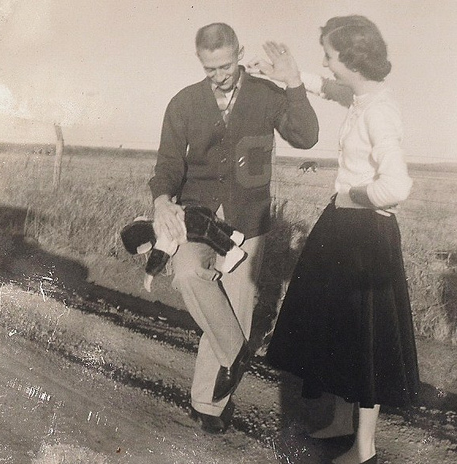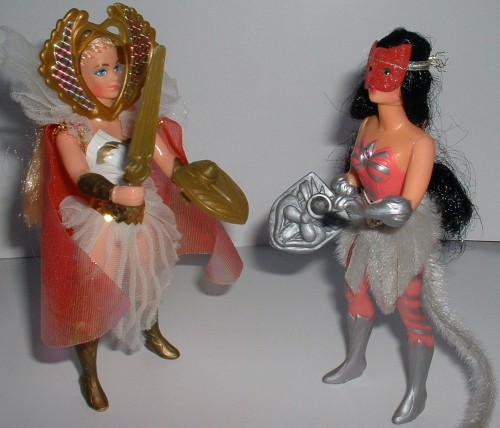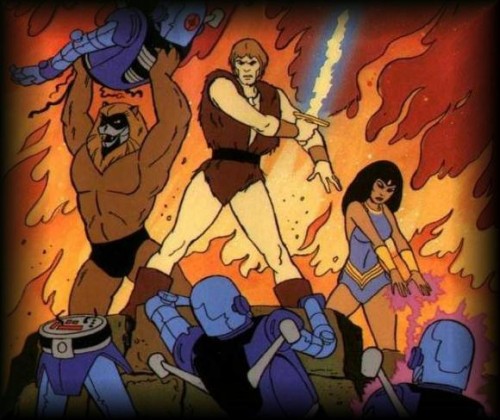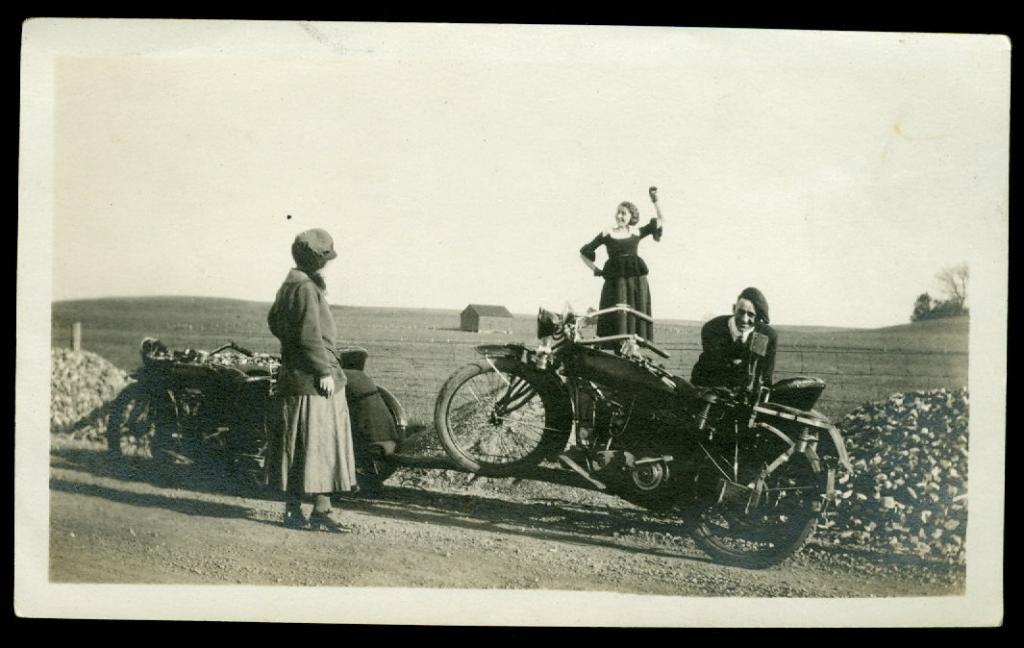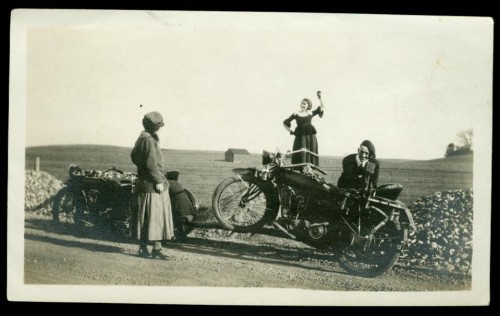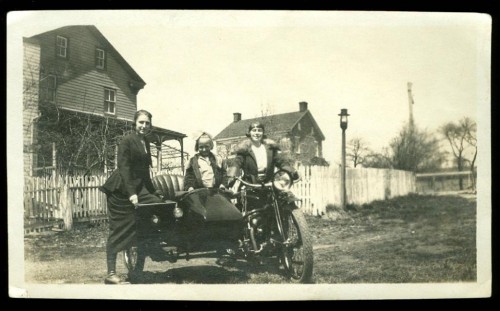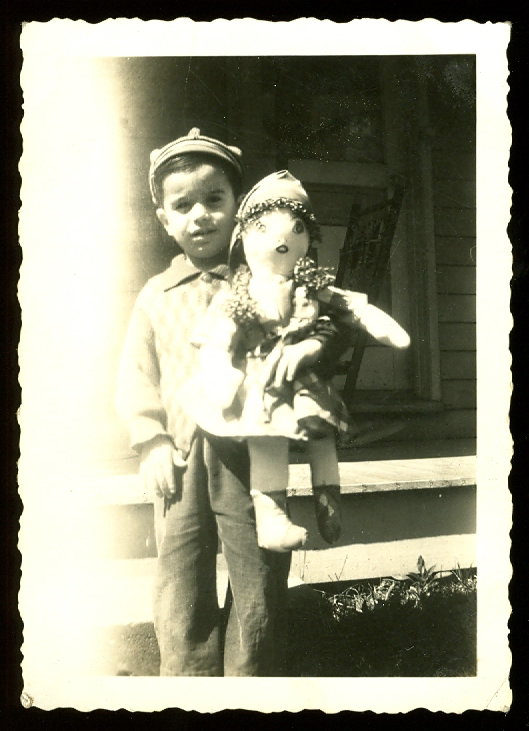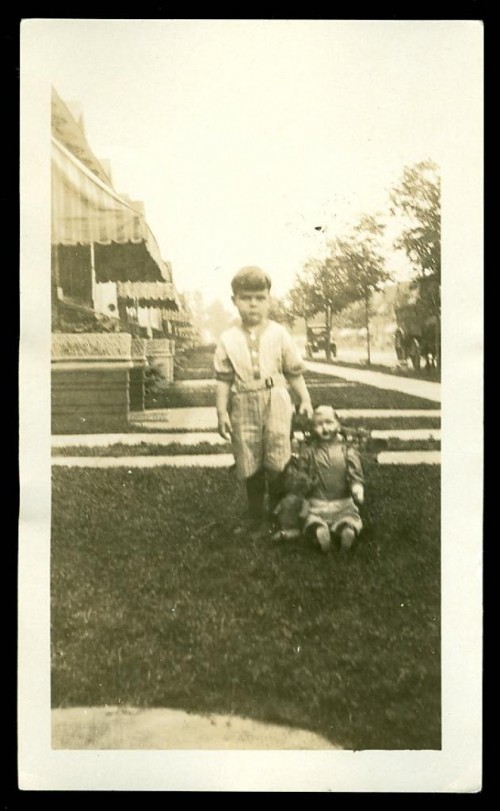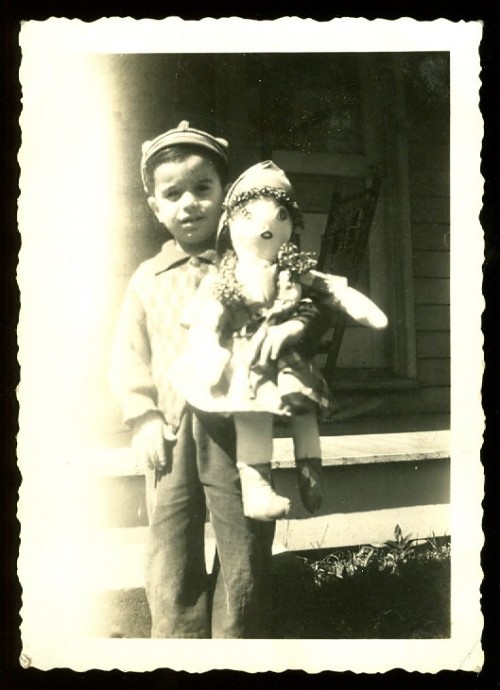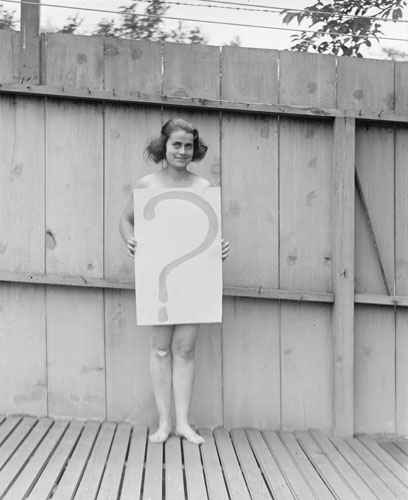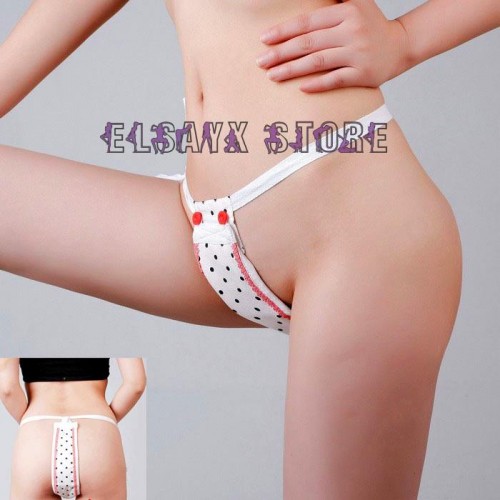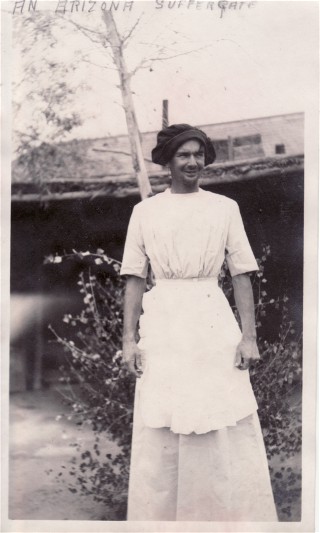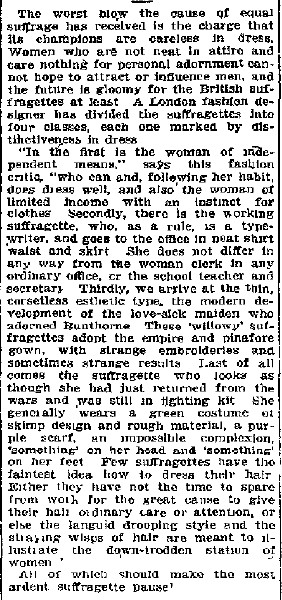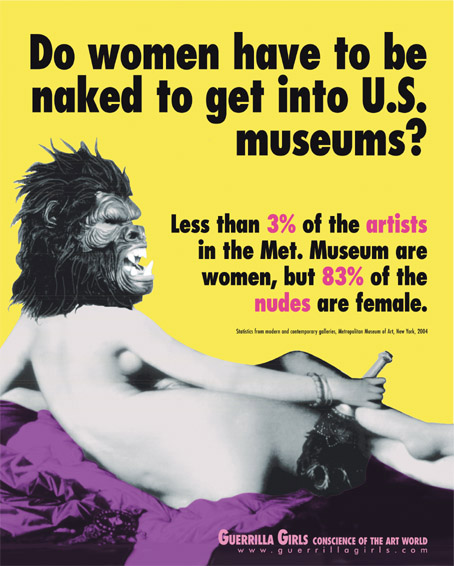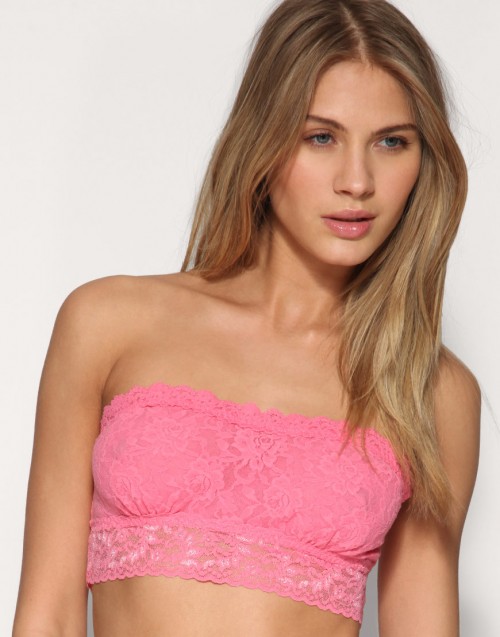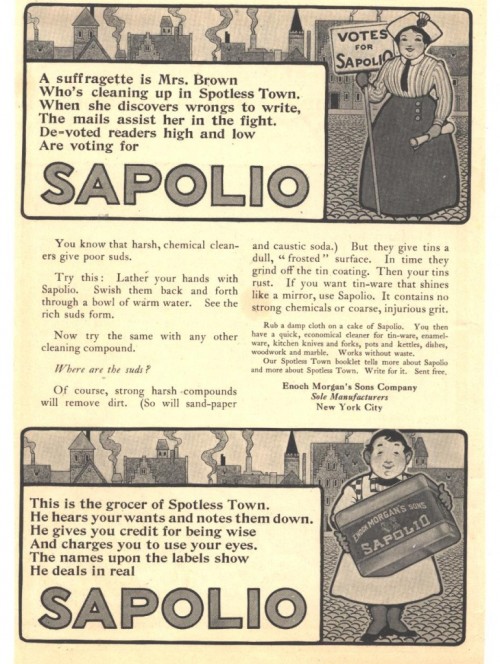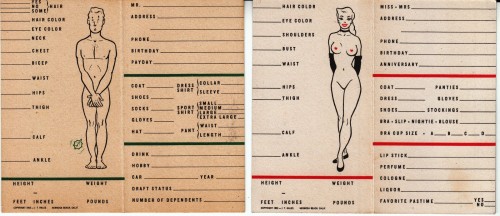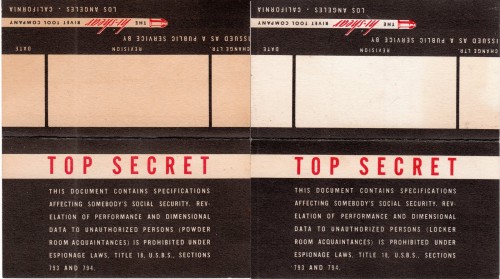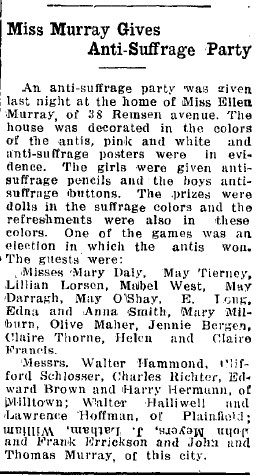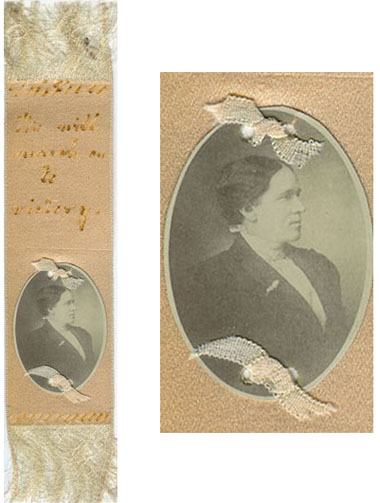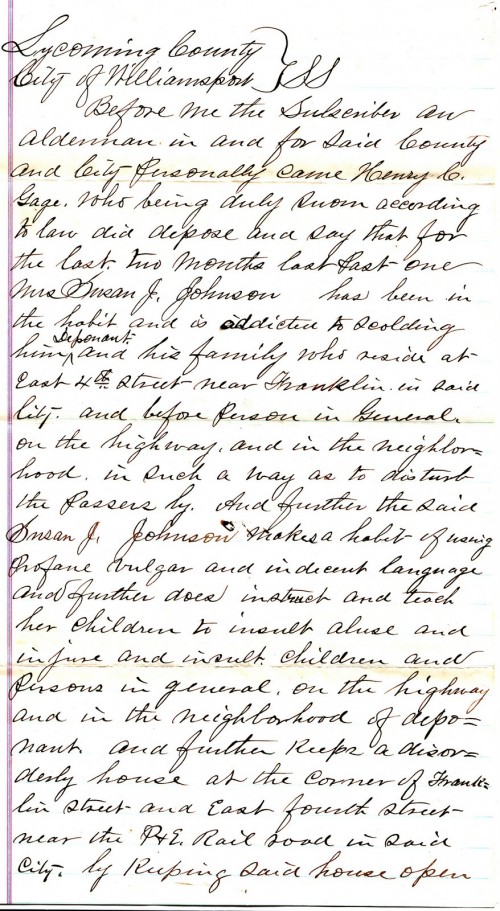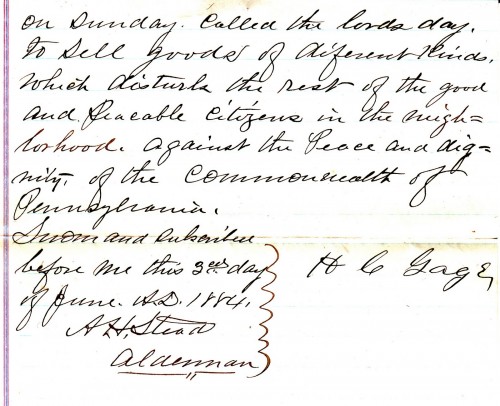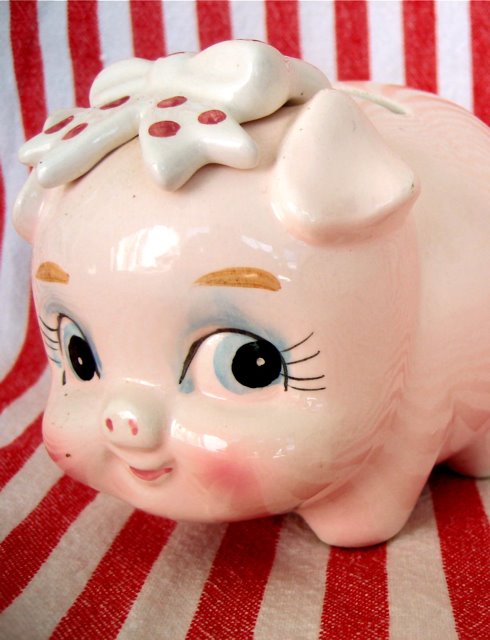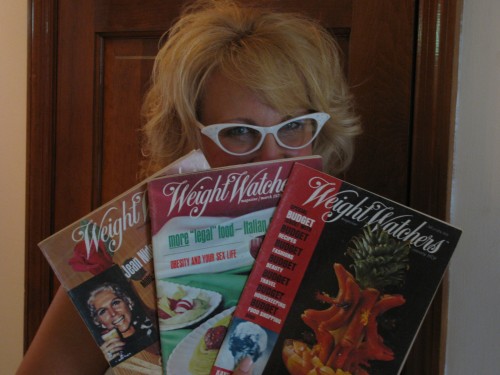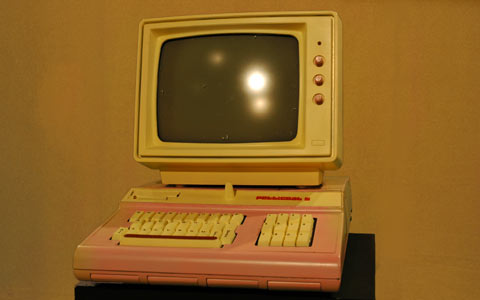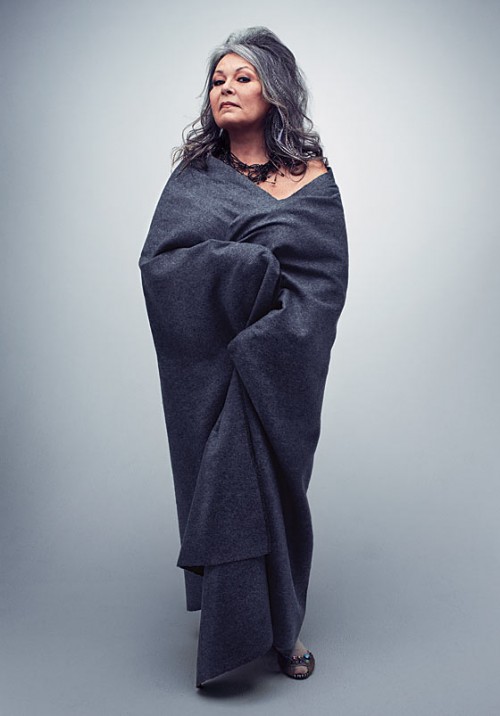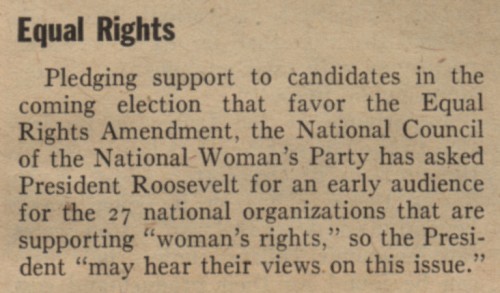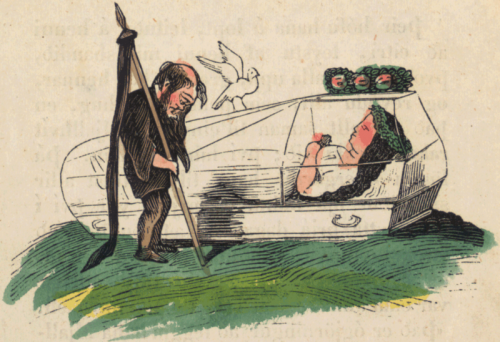Because people do kinky things to stuffed animals. Via.
Author: Deanna
The Sexual Segregation Of She-Ra; Or, Why I Love Thundarr
I’m too old to claim to have logged hours of watching She-Ra or He-Man — or any childhood memories from that MOTU period. But that won’t stop me from having an opinion.
In The Problem With She-Ra as a Feminist Text, Renee Martin considers the retro ass-kicking cartoon vixen in terms of various female identities:
As adult, I can look at She-ra and still appreciate the positive role that she filled for some young girls. I say some, because as a WOC, She-ra is not a show that I would particular encourage my children to watch, and even more so if I had a daughter. You, see when feminists start talking about women’s advancement, my first question is which women are we talking about? If we’re honest, no matter how many times the great unified sisterhood is pitched by feminism, there are always going to be some women, who somehow don’t fit the mold, because they are poor, of colour, trans, lesbian, older, disabled etc.
…I love her even though she is flawed and continues the erasure I feel as a marginalized woman in many spheres, but I will not dismiss her, because I don’t have the right to take away heroes from little White girls, who need their heroes too. Even though their challenges will be much different than mine, I will not deny that these challenges exist, and by so doing erase the threat that they pose to me. There are very few positive role models for young girls of colour to look up to but erasing the few White images will not change that.
When I read Martin’s post, I found myself nodding my head in understanding and agreement; however…
I’m still struck by something Hillary DePiano, author of The She-Ra Collector’s Inventory: An Unofficial Illustrated Guide to All Princess of Power Toys and Accessories, said in my interview with her:
Interestingly enough, I started somewhat backwards. He-Man predated She-Ra by quite a few years and as a kid I just LOVED He-Man. I had quite a few of the toys. But when the spin-off show, She-Ra came out, my parents decided that since there was now a “girl version” that I had to give all my He-Man figures to my brother and that he would play with them and I would get the She-Ra. God, was I bitter about that. I think there is some feminism lesson in there.
I can’t help but wonder, then, if She-Ra was a means of sexual or gender segregation.
She-Ra was part of the Master Of The Universe world but she was relegated to her own corners of it, kept out of the “Males Only” areas just because they had lady parts. (The usual over-emphasized comic book figure lady parts, of course. He-Man had his own exaggerated maleness too; it’s the earmarks of such works.) I can’t say that watching the complete She-Ra series and all the He-Man episodes, we could count how many bubblers water fountains She-Ra and crew couldn’t drink from, how many buses these sheroes rode in the back of; it’s far worse than that.
The simplicity of making an “all female version” of the popular Saturday morning cartoon series completely removes coexistence. Women on one side; men on the other — the original side. Almost like parallel universes, really. What does that say about gender equality? Not much. Especially if parents, the kids’ overlords, were interpreting these two shows and their accompanying toy sets as “one for boys, one for girls.”
(If there were any super-cross-over MOTU episodes, those might be more interesting; but I doubt I’d be surprised.)
That’s maybe (partly) why I liked Thundarr The Barbarian. There may not have been complete equality, but at least Princess Ariel and Ookla the Mok existed along side leading man Thundarr.
Sadly, there were no Thundarr The Barbarian toys. *heavy sigh* Which means I cannot discuss the parental interaction. Nor can I collect the toys.
PS For the record, I was — and forever remain — an Ookla fan. Ookla was a formerly enslaved a leonine humanoid with fangs and yellow eyes. Whatever a Mok may be in this cultural equation, I guess that’s how I’m identifying.
While Ookla’s guttural, growling language may seem unintelligible, and therefore not appear well suited for blogging writing, “he” is also, according to those who know, “the most likely of the heroes to charge right into an enemy attack or to be enraged by unusual nuisances or threats.” And that, my friends, is how I see myself. (Plus, I will also go quite out of the way to avoid water on my face as well.)
Image credits: Photo from Hillary DePiano’s book and used with permission.
Flappers Don’t Settle For Sidecars
Two photos from the 1920s featuring women and their motorcycles — vintage Indian motorcycles & sidecars. But the ladies don’t just sit in the sidecars. …Maybe little girls do. But not women. Photos via Lynnstudios.
William’s Always Wanted A Doll
Remember William Wants A Doll from Free to Be, You and Me?
Well, William — and millions of little boys just like him — have wanted dolls through the ages. Some were lucky enough to have had parents who weren’t freaked out and let them have dolls. Some parents even took photographs of their boys with their dolls, like these from 20s and 30s.
Images via bondman2 @ eBay.
Sign Of The Times: 1922 & Today
Message in Washington, D.C., July 28, 1922; message to Washington, D.C. today.
Don’t let the tea party-ers or republicans fool you: the hold-up on the debt ceiling has nothing to do with balancing the budget or creating smaller, less intrusive government. Despite running on such slogans, or “jobs,” those who were swept into office also swept in their own dirty under-the-rug ideologue agendas. Look at restrictions on abortion, for example. Fear, misogyny and racism rule; using legislation to create more government intrusion to benefit wealthy white men. Meanwhile, these elected conservative officials pass on the lies and deny the reality of the Bush tax cuts which, by the way, blew-through Clinton’s surplus and, along with deregulation and cronyism, created this mess.
Other shades and shadows from the 1920s which are today’s boogeymen:
- Prohibition of alcohol occurs in the United States. Prohibition in the United States began January 16, 1919, with the ratification of the Eighteenth Amendment to the U.S.Constitution, and it continued throughout the 1920s. Prohibition was finally repealed in 1933. Organized crime turns to smuggling and bootlegging of liquor, led by figures such as Al Capone, boss of the Chicago Outfit.
- The Immigration Act of 1924 places restrictions on immigration. National quotas curbed most Eastern and Southern European nationalities, further enforced the ban on immigration of East Asians, Indians and Africans, and put mild regulations on nationalities from the Western Hemisphere (Latin Americans).
- Growth and general acceptance of the Ku Klux Klan in America.
- The Scopes Trial (1925) which declared that John T. Scopes had violated the law by teaching evolution in schools, creating tension between the competing theories of creationism and evolution.
Photo via Library Of Congress.
Fabric Swatch Friday: Mermaids
Retro novelty print fabric with mermaids and fishes; via The Dream Merchants II
The Vow: For You, Not I
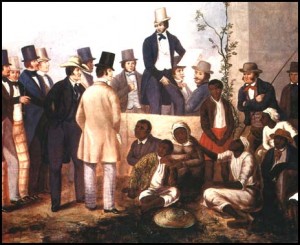
I’m Fonda Of Your Panties, Knickerocker!
I found these fabulous panties, here, at A Slip Of A Girl: the Jane Fonda New Workout Inspired Panties, by Knickerocker.
Of George Eliot & Marilyn Monroe
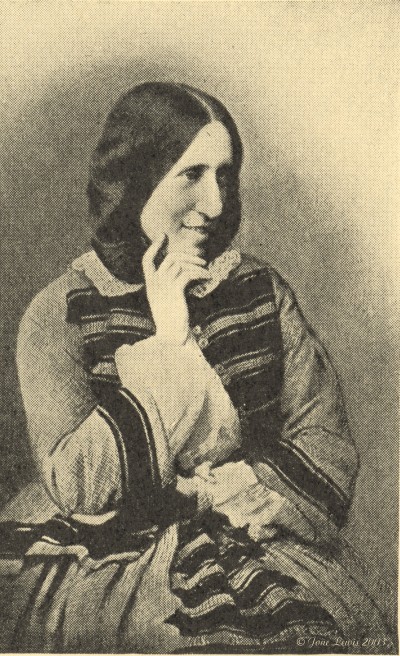
I am absolutely fascinated by Adair Jones‘s debate on the following question: “Was George Eliot’s late marriage a resignation from being a strong-minded woman?”
I haven’t read the works under discussion and, embarrassingly, my knowledge of George Eliot wouldn’t fill a thimble — but that doesn’t put an end to my opining. For it’s not the “did she or didn’t she” of the argument which has me most fascinated, but the “how” of it all…
Once there was a school of thought that held that autobiographies were superior to biographies; a person is the only one who really knows their own life, no amount of research can replace that. Along the way, the sub-genre of memoirs was created in order for a person to be able to tell a smaller story, the story of only a chapter or two in their lives as opposed to the whole story. Memoirs were greatly discredited in the whole Oprah-Frey fiasco. None of that memoirs stuff is of importance here; but memory is.
You see, I don’t remember things by dates. I have a linear concept of time, but dates are not my thing. And time itself passes unevenly for me — for most of us. My children, for example, grew up overnight despite those sleepless nights which I thought would never end. Time waiting for a child in a counseling appointment without a book vs. the same one hour appointment with a book, well, you know how that goes. And then there’s the matter of memory…
What I remember and what my husband remembers about things we’ve done, conversations held, etc. clearly exposes problems with perceptions. What I consider significant, he may not; and vice versa. And I, like many people I am told, often walk to the kitchen only to wonder why I went there.
Memory is a twisty thing.
So how reliable am I in terms of writing my autobiography?
I’m guessing not good at all.
So would the biographer be better?
I swore I wrote about (some of) this before, but I write so many places that if I did, I couldn’t find it; if I do find it, I’ll update with a link. [Note to self: you’re loosing your mind.]
But that is, in part, precisely what I’m talking about. If I were writing my own biography or memoir, I might just reference something I believed I wrote. And even upon being unable to produce it, would swear it was misplaced (or, if I’d grow even more paranoid, claim it was stolen). I’m that convinced I did it. Even if I hadn’t included that tidbit in my autobiography, some researcher pouring through my personal effects, correspondence I’d written over the years, etc. might just find that I’d penned a letter in which I swore that I had written on the subject. Perhaps I’d even accuse a person of the theft of it. This poor researcher / author would then have proof of my presumption, but not what actually happened.
And this is only one example which is far more cut and dried than other realities… The article or written work exists or it doesn’t; my faulty memory may be found out due to evidence one way or another. But what of my motivations?
What if I insisted I wrote something, knowing I did not, but wished to claim the work of someone else? What if I hated someone so much I convinced myself the story was true, could even pass a lie detector test because I, in fact, believed what I was saying? Maybe I did believe it so much because I was unable to be truthful with myself about my own actions?
We all tell ourselves lies everyday. Just to get through the day. Most of them aren’t so big and bad as accusing someone of theft. We usually don’t lie to hurt others but rather to protect ourselves. We lie to ourselves about the deeper things we cannot face, little and big vanities alike.
Whatever George Eliot aka Mary Ann Evans aka Mary Anne Cross writes to her friends she is also writing to herself. She has her reasons as much as her denials to motivate her. And so, even a historian with access to public and private works, letters and diaries, is still limited by the memories and motivations of their subject.
Did Eliot consider her last marriage an act of dependence? An independent or vain act that would ensure her legacy? Was it just easier to count on someone in her old age, easier to tell people that, or what?
Who knows.
It’s intellectual fun to pluck at the strings left behind, like clues leading to the the ball of yarn that is a hero’s psyche. But we don’t know. We cannot read their soul.

This is why we have so many biographies. Even after the memoirs and autobiographies (with and without the help of others), even after hundreds of other biographies, there’s still room for more.
Some people who count such things say there are 600 books on Marilyn Monroe alone — with new releases each year. Because she continues to fascinate me us. Forget the suicide-or-murder debate; forget the motivations, cover-ups, bungles, etc. of other people; we can never know what went on in Marilyn’s head or heart because no one, not even her contemporaries and confidants, knew that.
Marilyn and Mary Anne, and all the others, will continue to fascinate us because we will never ever know. We will never be truly sated by any “definitive” book on a person because we can never ever have the definitive answers.
Whatever the subjects of biographies and autobiographies leave for us, whatever they tell us, remains forever between the memory gaps, what they believed, the stories they’ve told themselves, what they believed they needed to protect when they told others their stories…
That is unsettling.
It’s a realization that we cannot ever really know anyone.
And so we continue to read, investigate, interpret, what we can. …Still hoping we will find The Truth.
Think Global, Act Local
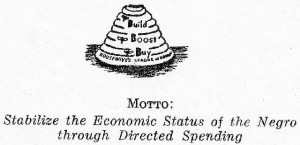
“Think Global, Act Local” is more than an old saying or mantra; it’s a philosophy. Thinking globally while acting locally is a way to take huge problems, like racism (as the image shows), and break them down into manageable, individual, acts. It motivates anyone who believes “If you’re not part of the solution, you’re part of the problem.”
I was reminded of this when Nazneen Hamilton wrote about the importance of buying locally produced items. It’s not only a wise thing to help your local economy — and generally helps your own household finances (something you know I care about) — but it also has a huge impact on the environment.
Heck, buying locally grown food and/or locally made products is a far greener thing to do than getting a newer less-gasoline-guzzling car or even getting one of those hybrid or electric cars — because the cars and batteries are brought over the oceans on freighters, freighters which leave far larger carbon footprints (or wakes) than most of us can imagine.
So I have to ask you, when’s the last time you checked the labels to see if you could buy local?
And, if you do and find your favorite shop doesn’t offer a local alternative, have you pushed them to do so?
Sexy Sanitary Belts?!
I can only tolerate so much. And “Vintage Sexy Women Sanitary belt Panties Lingerie” goes past that place.
Do you still remember the sanitary belt from last century, which was only used for women monthly period, now we have them in new design, some of them are with pure cotton material inside, some are made with rubber inside…. please see below for the difference
You can also put them on as sanitary belt by place sanitary pads on, but more important, they are new underwears making you sexier and more special. just image it!!
1. Condition:100% new, never been wron
2. Size: one size fits more with the straps
belt length:around 17.0″, width: around3.0″ .
3. Color: show as the picture.
4. Packing: simple plastic bag, then packed in dark grey bag when shipment is made to keep private.
Hey, these garments come from China, so I’ll excuse the English as a second language issues — but the garment itself? No way.
I realize there’s a sexual fetish about everything, including menstruation, but really, so in your face about it? Really?!
The old sanitary pads that were worn with sanitary belts were like bricks. I know. I’m old enough to have seen them. First, in that grade school girls only “changing bodies” talk in the gym. And, yup, those thick brick sanitary napkins were on store shelves too. Mom warned me about them, and I, when I reached that special time, opted for the modern marvel of sanitary pads which were both thinner and had adhesive on the underside so they stayed in place in your panties. Even then, I quickly switched sides and became a “cork girl.”
“Corks,” that’s what we called tampons around our house; it was corks or pads. No one opted for bricks, though I’m sure they were still available. On store shelves then too. After all, you can still find them today at hospitals and stuff, so someone is making them, selling them.
Now that I’ve already digressed…
Here’s a horrifying truth from my young womanhood: When my sister, mother, or I had “the curse,” we had to remove our sanitary paper product, wrap it thrice in toilet paper, place it neatly into a small paper lunch bag (kept in supply neatly in the cabinet under the bathroom sink), close the paper bag by folding down the top three times, then carry the whole thing out to the garage — immediately. How’s that for communicating the evils of bodily female functions?
One tradition I did not hand down to my daughters.
Anyway, back to the “sexy sanitary belts.” Elastic strips are not sexy, or comfortable. Hell, that’s why I hate thongs. Adding areas for storing menstrual flow is not sexy. I repeat: not sexy.
I’m not saying women should be ashamed of their monthly cycles (say by removing all signs of it from the household asap). Or that women should feel uncomfortable about using pads rather than corks (that’s just my personal preference). And yeah, you have my permission to love and lust the periods and products of your periods; to each their own includes kink and fetishes. But to market sanitary belts as sexy panties is to clearly not understand what is generally sexy, what the general human population will respond to as sexy, or why people would enjoy this particular kink.
The whole thing shows a lack of understanding about marketing as deep and vast as the complete lack of understanding of taboos as turn-ons.
That is unforgivable.
And the Christmas tree lights border around the whole page?! Oh, gawd, puh-leeze give me a toaster or appliance instead. I know that small appliances are no-nos as gifts for a woman, especially from her spouse or lover, but now that these “sexy sanitary belts” are an option… Well, honey, you have my permission to get me a toaster. No, make that a mixer; I do have a fetish for those.
However, you can buy these sexy sanitary belts for men and women here.
Suffering A Man In A Dress For Suffrage
On the front of this 5 3/4 X 3 1/2 “snapshot,” which the seller says is circa 1915, someone has printed “AN ARIZONA SUFFRAGETTE.”
As I cannot handle this photograph, I am not certain of it’s age — but I am certain that the “suffragette” it is a man wearing a dress and apron. Something about the photo feels more modern than 1915… Maybe it’s just that men putting on dresses to mock women for being too masculine to be pretty, that equal rights for women is as silly as a man wearing a dress, that the whole thing is just too-too familiar.
Archimedes Screw – You
One of my favorite altered art works; you can buy a poster copy, if’n ya wanna.

How To Dress For Success: Suffragette Edition
In The Washington Post, November 1, 1909, an unidentified “London fashion designer” gets bitchy and judgmental about how suffragettes dress. Yes, even though I don’t know if this possibly fictitious designer is male or female, I say “bitchy.” For even should ye olde fashion designer be both real and male (gay stereotypes aside), the fact that this item appeared at all in the Society pages, is proof of the bitch factor.
But perhaps most importantly are the number of appearances of myths, stereotypes, and general mean spiritedness which are preyed and played upon today:
The worst blow the cause of equal suffrage has received is the charge that its champions are careless in dress. Women who are not neat in attire and care nothing for personal adornment cannot hope to attract or influence men, and the future is gloomy for the British suffragettes at least. A London fashion designer has divided the suffragettes into four classes, each one marked by distinctiveness in dress.
“In the first is the woman of independent means,” says this fashion critic, “who can can and following her habit does dress well, and also the woman of limited income with an instinct for clothes Secondly, there is the working suffragette, who, as a rule, is a typewriter, and goes to the office in neat shirt waist and skirt She does not differ in any way from the woman clerk in any ordinary office, or the school teacher and secretary Thirdly we arrive at the thin, corsetless esthetic type, the modern development of the love-sick maiden who adorned Bunthorne These ‘willowy’ suffragettes adopt the empire and pinafore gown, with strange embroideries and sometimes strange results Last of all comes the suffragette who looks as though she had just returned from the wars and was still in fighting kit She generally wears a green costume of skimp design and rough material, a purple scarf, an impossible complexion, ‘something’ on her head and ‘something’ on her feet Few suffragettes have the faintest idea how to dress their hair Either they have not the time to spare from work for the great cause to give their hair ordinary care or attention, or else the languid drooping style and the straying wisps of hair are meant to illustrate the down-trodden station of women”
All of which should make the most ardent suffragette pause!
Do Women Have To Be Naked To Get Into U.S. Art Museums?
Made by the Guerrilla Girls; found at Experimentations Of A Teenage Feminist.
A Tube Top By Any Other Name…
Still drops and rolls just as horribly.
Sorry, folks, but this Hanky Panky Signature Lace Lined Bandeau Bra is really just a lace tube top. I know, I know, I’m a big-busted-biased woman who’s never liked tube tops due to the gravity of gravity, but come on — a $46-and-change pink lace tube top?! (Sale via Shop It To Me.)
Suffragette Soap Ad
This ad, for sale from MAINE-ARTEMIS, shows how products were marketed to suffragettes.
Enoch Morgan’s Sons Company ad for Sapolio cake soap:
A suffragette is Mrs. Brown
Who’s cleaning up in Spotless Town
When she discovers wrongs to write
The mails assist her in the fight
De=voted readers high and low
Are voting for
Sapolio
Vintage Gold Diggers, 1952
I’m sure this pair of vintage advertising pieces from/for the Hi-Shear Rivet Tool Company were intended to be humorous, in that oh-so-popular risque way of 1952; but I find them predictably insulting. It’s not that they’re nude — I collect vintage nudes and risque materials. Or even that “he” is allowed modesty while “she” wears the gloves and smile of a burlesque performer. (Frankly, as nearly every woman has noted in the Anthony Weiner affair, the less male genitalia seen the better.) But it’s what else is seen inside these “Top Secret” cards when they are open…
He has a number of dependents — dependents, not children; she has none.
He has a payday; she has none.
He has a car; she has none.
He has a hobby; she has a pastime — with places to check “yes” or “no”?!
*sigh*
Maybe women wouldn’t be seen as gold diggers if they had the opportunity to earn their own paychecks, own their own cars, not be seen as dependent children… Have a legitimate hobby even.
Both vintage pieces from the collection of Jim Linderman.
Rethinking Pink (Or Girls Don’t Need Pencils)
Speaking of suffrage colors…
A news clipping from the New Brunswick Times, October 15, 1915, about Miss Ellen Murray who threw an anti-suffrage party:
The house was decorated in the colors of the antis, pink and white and anti-suffrage posters were in evidence. The girls were given anti-suffrage pencils and the boys anti-suffrage buttons. The prizes were dolls in the dolls in the suffrage colors and the refreshments were also in these colors. One of the games was an election in which the antis won.
I can only assume that there was an error and that the dolls and refreshments were in anti-suffrage pink and white, right? And good heavens, why would girls need pencils?! Silly Ellen; only boys need to write! Plus, buttons are like pins, which is jewelry and more girl-like. Sheesh.
If You Believe “Good Guys Finish Last…”
It’s easy to be pessimistic today, especially when it comes to business. Those of us not in the upper two percent, those of us with little in our pockets but our sweaty palms, those of us who don’t just feel beaten-up by big business but have the financial and even physical marks to prove it, those of us who are the “other” under the heels of the “us” that is Corporate America, we can easily draw the conclusion that the only time virtue comes up is when the fat cats greedily giggle over their “there’s no virtue in business besides money” mantra.
These feelings infiltrate, or, if you prefer “trickle down” (the only time the principal actually appears to work) into every aspect of our world, at every level. From realized fears of neglect and victimization in our political system to the mentalities of school bullies, controlling abusers, and national “pro-life” terrorists., it seems we are increasingly forced to live in a black & white world of virtue — and to consider which side we are on… Should we remain the down-trodden good guy who will finish last, if at all? Or should we give in to the dark side, just to survive?
I hear this echoed in discussions everywhere. Activists wondering if they should adopt the same tactics their opponents successfully use. Entrepreneurs who cringe at identifying themselves as such because of what “being in business” implies. Parents wondering how they can continue to teach their children to be “good,” “fair,” and “generous,” when their children see what the rich and ruthless reap.
It seems hopeless.
Enter hope. Or rather enchantment.
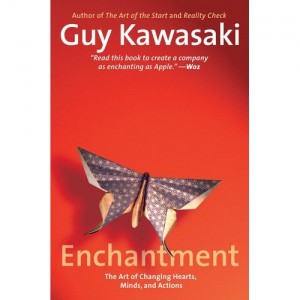 Enchantment: The Art of Changing Hearts, Minds, and Actions
Enchantment: The Art of Changing Hearts, Minds, and Actions, by Guy Kawasaki is primarily touted as a business book — a small-business or entrepreneurial manifesto. And sure, it works for that. But more than that, Kawasaki’s book explores the power of enchantment.
Enchantment can occur in villages, stores, dealerships, offices, boardrooms, and on the Internet. It causes voluntary change of hearts and minds and therefore actions. It is more than manipulating people to help you to get your way. Enchantment transforms situations and relationships. It converts hostility into civility. It reshapes civility into affinity. It changes skeptics and cynics into believers.
Firstly, Enchantment is a breath of fresh, good, air; it’s an affirmation that good guys and gals don’t have to finish last. And there are real stories, real cases, of real good people who are examples.
Secondly, Kawasaki outlines the principals of enchantment — sound psychological principals and insights into human behavior that are easy to read and even easier to comprehend.
Thirdly, the book inspires action. Heart lightened with the affirmation and validation that Good is indeed good, heart warmed by the examples of Good successful people, and armed with the knowledge of how it all works, you, the reader, are inspired to live enchantingly.
It’s good that you are inspired because the author is now going to offer you opportunities to implement the strategies.
Kawasaki provides a checklist of things to consider and opportunities to explore, rather like self-help books do. (In the book’s Coverphon, there’s evidence neither the author nor the publisher would like this “soft” self-help comparison; but I think the work is to be commended for it’s uplifting, affirming, readily understood, easy to incorporate strategies as well as it’s “hard” business acumen.)
And, yes, the author includes plenty of tips and methods for businesses and entrepreneurs to put to work online (i.e. push and pull technologies such as email, Twitter, Facebook, websites and blogs, etc.).
While nearly all stories, prompts and checklists are business related (including chapters on how to enchant your boss, resist enchantment, etc.), there’s no reason the information couldn’t be applied to any facet of your life, including parenting. Where else does one need to model integrity more?
(There are even concrete stories for you to counter wise-ass remarks from kids who dare you to prove that greed and might are the only ways to get ahead — in fact, stories and examples that suggest that life ought not to be viewed as a race in which one must “get ahead,” but rather how to work for the betterment of many.)
In short, Enchantment is just the breath of fresh air that good guys and gals need to reaffirm their vows to be a person of delightful integrity. It gives us the tips to enchant — and the permission to be enchanted with ourselves.
PS If you do buy a copy of Enchantment, you might want to know about this enchanting offer from Guy:
When people anywhere in the world buy a copy of Enchantment in any form (paper, recording, or ebook), they can get a free copy of Garr’s book called Presentation Zen.
Presentation Zen is one of the best books ever written about making great presentations. Seth Godin said this about it: “Please don’t buy this book! Once people start making better presentations, mine won’t look so good.”
Disclaimer: I was given a free review copy of this book. While the free copy was appreciated and enjoyed, the fact that it was free has no bearing on this review or the contents of this post — other than the legal requirement to make such a statement.
Antique Suffragette Bookmark
While interviewing Lauren Roberts about her bookmark collection (continued here), I found one antique silk bookmark most fetching…
Turns out this might just be a bit of suffragette history.
Lauren, can you tell me more about the Carrie Chapman Catt bookmark?
Oh, I loved this one! I bought it because it was beautiful. It is a soft cream-colored silk with delicate fringe on both ends. The woman’s picture is attached with silk ribbon that goes through the bookmark. The words read “We will march on to victory.”
When I first bought this I thought it was a bookmark made by a WWI soldier for his mother (or vice versa), and that it had her picture on it. I can’t remember how I came around to the idea that it might be Catt; perhaps the seller suggested it?
I searched out numerous images of Catt online but nothing like this ever showed up. Since it is a formal portrait it is impossible that it was the only copy of that image. Plus, the picture is of a woman likely to be in her fifties, and by that age she was certainly well known for her work. But the resemblance to Catt is startling. I sent it off the a librarian at LOC, and she agreed that it very much appeared to be her but since they could not find another copy of that image either they had no proof one way or the other.
The saying on it leads to me to wonder if it might in fact be Catt’s mother. The age is likely right since the clothing appears to be from the late nineteenth century. Could it have been an image of Catt’s mother when Catt was in the midst of the battle for women’s suffrage and she made this up for her mother as a kind of promise? If so, it is a very valuable piece of history, one of kind. But again I will never know, which is both sad and compelling.
Well folks, if you can help with identifying the portrait — or have any other information — please let us know! Post a comment here or contact Lauren. Thanks!
Art Therapy For Break-Ups
This is either called Fuckface the Fucknificent or You & Your Ugly Heart by Collin David, who I just interviewed here.
Punished For Parenting, Blue Laws, 1884
Jim Linderman presents this original court document from Williamsport in Lycoming County, Pennsylvania, dated June 3, 1884 in which Mrs. Susan Johnson was arrested and charged with being “addicted to scolding,” including the habit of using profane, vulgar and abusive language.” Given that, it seems obvious — or odd, depending upon your parenting views — that Mrs. Johnson also instructed “her children to insult, abuse and injure children and persons in general.”
At the bottom, or second page, of the court document, it is also noted that Mrs. Johnson dared to keep her business establishment open on Sunday, “the Lord’s day” — in violation of Blue Laws.
Me thinketh the open store, the audacity of a woman to make money on the sabbath, was the real problem.
But I’m a biased feminist.
In fact, without anything else to go on, I daresay Mrs. Susan Johnson was a strong woman, an independent woman with her own business. One who didn’t tolerate crap from anyone and was raising her children to do the same — in a time and place where women were like children and so should be seen and not heard.
But I have no proof of this.
According the arrest warrant, Mrs. Johnson had to pay bail in the amount of $200…
Despite my best attempts at research, I could not find any report of how the court story ends. However, it appears that poor Mrs. Johnson died shortly after tornadoes struck and leveled her house along with several others — “not a timber left standing” — according to a newspaper story in the Daily Gazette And Bulletin, Williamsport, Pennsylvania, on February 23, 1884. I can’t be absolutely certain this is the same Mrs. Susan Johnson, but it’s the only trail I could find. Rest in peace, Susan.
Cheap Thrills Thursday To Bank On
Since ye old piggy banks are vanishing, I had to show you this cute vintage pink piggy bank I found at Beach Vintage.
Cheap Thrills Thursday: Retro Mimi Interview
My interview with Retro Mimi of The Retro Weight Watchers Experiment and her amazing collection of vintage Weight Watchers magazines and publications!
Mocking Marketing To Women
An awesome video from BBC’s Look Around You on The Petticoat 5: The first computer designed just for women. “The computer was created by Patricia (her surname is silent).”
Watch and be amazed.
http://www.youtube.com/watch?v=0GThtMAZGYU
While clearly satire, I love how this precisely hits so many key points about products for/marketing to women.
We All End Up Paying For It, Celebrities Or Not
Gawd I love Roseanne. There are about one million reasons to; here’s one more.
A very special quote from a very special article, And I Should Know, Barr had published at NYMag:
Based on Two and a Half Men’s success, it seems viewers now prefer their comedy dumb and sexist. Charlie Sheen was the world’s most famous john, and a sitcom was written around him. That just says it all. Doing tons of drugs, smacking prostitutes around, holding a knife up to the head of your wife—sure, that sounds like a dream come true for so many guys out there, but that doesn’t make it right! People do what they can get away with (or figure they can), and Sheen is, in fact, a product of what we call politely the “culture.”
After seeing one episode of Two and a Half Men, I (no prude, mind you) was aghast that this subject matter was on during the first hour of prime-time, a slot usually reserved for family programming. Even if I didn’t have children, or it aired later at night, I wouldn’t have watched it because I don’t enjoy misogynistic television.
I also eschewed the show because I dislike Sheen. I knew the allegations about Sheen and his abusive behavior were true. Even before I experienced domestic violence in my first marriage. And I have no problems not backing an abuser, no problem refusing to add my consumer clout to a celebrity brand — especially when they refuse to get help, continually mock their victims, and act entitled to their “right” to control and harm others.
And I don’t understand why more people don’t do this, don’t refuse to line the pockets of violent losers who hurt people.
I don’t know what Sheen’s entire problem is; and I really don’t care because he has a wealth of resources and people to support him in his hour lifetime of need. But even if it’s only due in part to the “culture” Roseanne refers to, we all end up paying for it; so why perpetuate it?
Equal Rights Status, 1944
A quick news item found in the May 1, 1944 issue of Pathfinder magazine; with links added by yours truly:
Equal Rights
Pledging support to candidates in the coming election that favor the Equal Rights Amendment, the National Council of the National Woman’s Party has asked President Roosevelt for an early audience for the 27 national organizations that are supporting “woman’s rights,” so the President “may hear their views on this issue.”
The Irony Of Jimmy The Greek (He’s Rolling Over In His Grave)
In January of 1988, Jimmy “The Greek” Snyder was fired by CBS for racism after he made the following infamous comment to an NBC affiliate, station WRC-TV:
The black is a better athlete to begin with because he’s been bred to be that way — because of his high thighs and big thighs that goes up into his back, and they can jump higher and run faster because of their bigger thighs. This goes back all the way to the Civil War when during the slave trading, the owner — the slave owner would breed his big black to his big woman so that he could have a big black kid.
[I remember, as a kid at the time, thinking it was odd no one was offended by the nickname, “The Greek” — especially as it, and even “Jimmy,” likely came from the general (lazy) inability to pronounce the man’s real name, Dimetrios Georgios Synodinos.]
I won’t deny there were more tactful ways to communicate realities of racism (it was, in fact, a breeding program; let’s not deny the horrors), but it seems “Jimmy” was also onto something… Something biological. Something which sounds even less, well, probable.
In a study published last year in the International Journal of Design and Nature and Ecodynamics, Professor Andre Bejan of Duke University, Professor Edward Jones of Howard University in Washington, and Duke graduate Jordan Charles, found that there’s a biological physical trait at the center of athletic performance:
The navel is the centre of gravity of the body, and given two runners or swimmers of the same height, one African origin and one European origin, “what matters is not total height but the position of the belly-button, or centre of gravity,” says study lead author Professor Andre Bejan of Duke University.
“It so happens that in the architecture of the human body of West African-origin runners, the centre of gravity is significantly higher than in runners of European origin,” which puts them at an advantage in sprints on the track, he says.
The researchers charted and analysed nearly 100 years of records in men’s and women’s sprinting and 100-metres freestyle swimming for the study.
Individuals of West African-origin have longer legs than European-origin athletes, which means their belly-buttons are three centimetres higher, says Bejan.
That means the West-African athletes have a ‘hidden height’ that is 3% greater than Europeans, which gives them a significant speed advantage on the track.
“Locomotion is essentially a continual process of falling forward, and mass that falls from a higher altitude, falls faster,” says Bejan.
The science, physics, of belly-buttons gets weirder…
In the pool, meanwhile, Europeans have the advantage because they have longer torsos, making their belly-buttons lower in the general scheme of body architecture.
“Swimming is the art of surfing the wave created by the swimmer,” says Bejan.
“The swimmer who makes the bigger wave is the faster swimmer, and a longer torso makes a bigger wave. Europeans have a 3% longer torso than West Africans, which gives them a 1.5% speed advantage in the pool,” he says.
Asians have the same long torsos as Europeans, giving them the same potential to be record-breakers in the pool.
But they often lose out to Europeans because Asians are typically shorter, says Bejan.
Many scientists have avoided studying why Africans make better sprinters and Europeans better swimmers because of what the study calls the “obvious” race angle.
While the study “focused on the athletes’ geographic origins and biology, not race, which the authors of the study call a ‘social construct,'” it seems Mr. Georgios wasn’t too far off the mark…

I should stop this now before I step into even deeper stereotypical waters.
But I can’t help but think that our hyper-sensitivity, our unwillingness to deal directly with racism in this country, leads not only to problems with firing the admittedly-tactless messenger (be it Jimmy The Greek or some angry comments to this blogger), but in any sort of rational discussion…
In even hearing this sort of news…
I mean this study was out a year ago, and if it weren’t for my visit to Chris Cruz’s blog, I never would have heard of this research.
Once Upon A Time… There Was The Storyteller
I don’t spend my time listening to TV show announcements, and I admit I know even less about comics — but I do read a lot of blogs. So that’s how I found out that ABC has just announced that they have picked up a new series entitled Once Upon a Time, which is similar to Marvel’s Fables comic book series in that the fairytale characters will be set in “today’s world.” (Poor things.)
http://www.youtube.com/watch?v=yz9VFa7Z6Y0
For some reason, this reminds me of Jim Henson’s The Storyteller, even if ABC’s show will have actors and (apparently) no puppets. And isn’t set in the past.
I’m looking forward to the new ABC television show… But I would welcome the return of Muppets, or any puppets, really.
